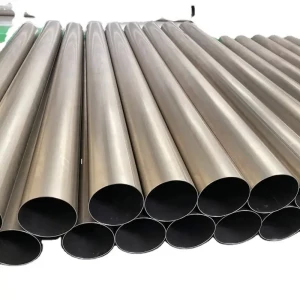Ti-6Al-4V ELI titanium alloy is an ultra-low gap variant of Ti-6Al-4V. The overall chemical composition of Ti6Al4V ELI is very close to that of Ti6Al4V, but the content of interstitial elements in the former is much lower than that of the latter. Due to its good biocompatibility, low weight, durability and corrosion resistance, it is an ideal metal for medical devices and implants.
During the melting process, interstitial elements such as iron and oxygen are strictly controlled to improve the ductility and fracture toughness of the alloy. It maintains good toughness even at low temperatures as low as -253℃. These properties, along with low modulus of elasticity and good fatigue strength, make Ti-6Al-4V ELI widely used in a wide range of applications, including medical equipment, surgical implants, aerospace components, structural components, cryogenic applications, offshore equipment.
Product Description
| Product Name | Ti6al4v eli titanium plate |
| Standard | ASTM F136 / ISO5832-3 |
| Application | Medical implant/medical device |
| Material | Titanium Alloy |
| Grade | GR5Eli , TI-6AL-4V ELI,GR23 |
| Thickness | ≥0.025mm |
| Width | ≤2000mm |
| Length | 1000mm-12000mm |
| Technique | Cold rolling & Hot Rolling |
| Surface | Bright/pickling |
| Shape | Rectangular/Square/small pieces |
| Certification | ISO, EN10204 3.1, EN10204 3.2 |
Application:
1.Based on High intensity,titanium products tensile strength can be up to 180Kg/mm².
2.Titanium and titanium alloy in aviation industry, is called "space metal"; In addition,
in the shipbuilding industry, chemical industry, manufacturing machinery parts,
telecommunications equipment, hard alloy, etc have increasingly extensive application
3.In addition, because of the titanium alloy with the human body has very good compatibility,so the titanium alloy can also be artificial bone.
Features:
1.Low Density and High Strength
2.Excellent Corrosion Resistance
3.Good resistance to effect of heat
4.Excellent Bearing to cryogenic property
5.Nonmagnetic and Non-toxic
6.Good thermal properties
7.Low Modulus of Elasticity
Mamy dla Ciebie więcej kategorii. Jeśli nie możesz znaleźć produktów, które chcesz powyżej, po prostu wypełnij formularz i powiedz nam, jakie produkty chcesz importować z Chin.





















